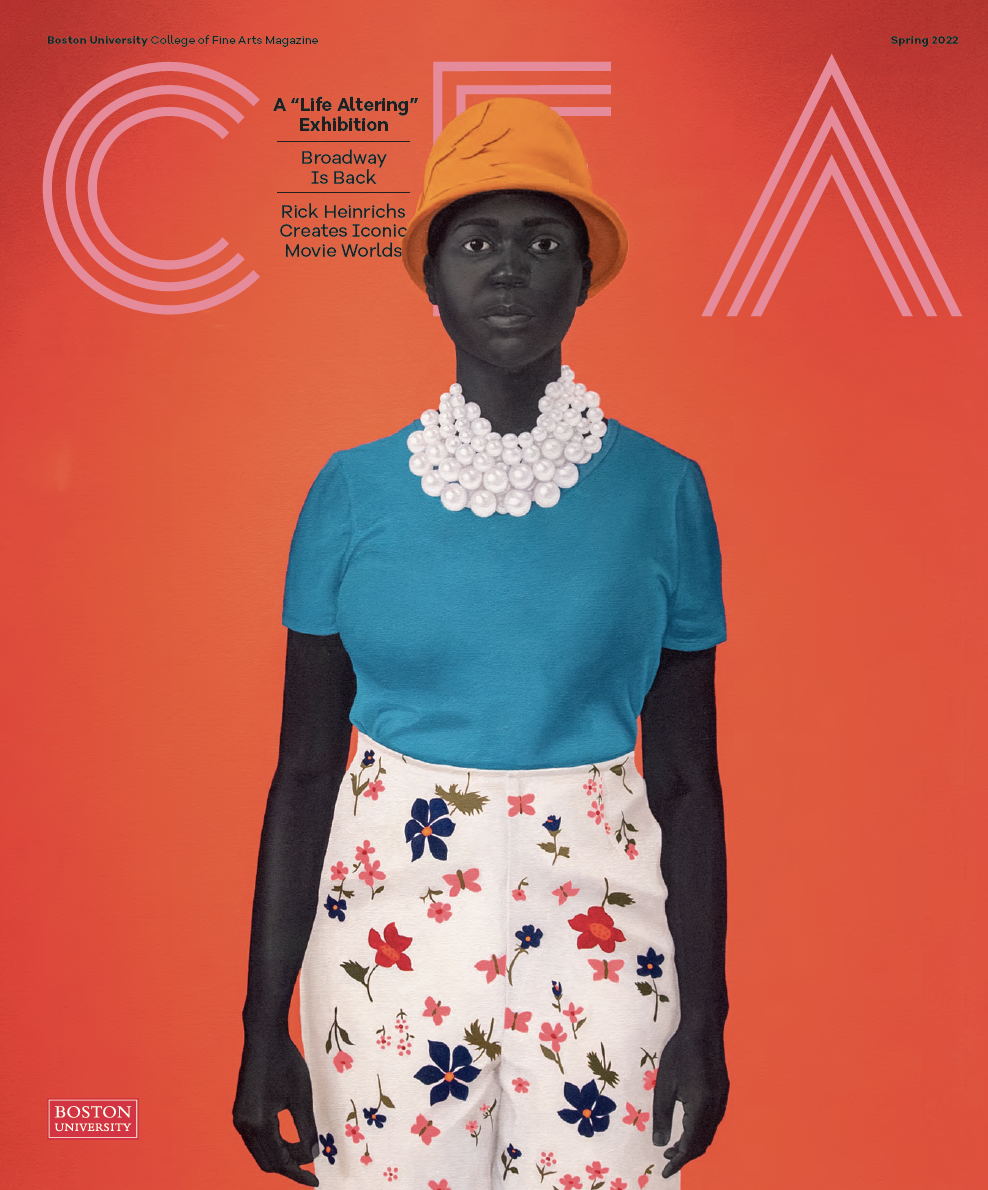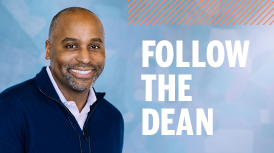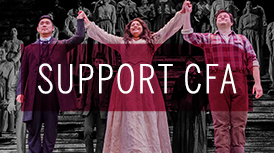Play On
Confined to Zoom, muffled by masks, and facing perilous budgets, US music education is in a fragile space, but it could emerge from COVID-19 more diverse, inclusive, and relevant than ever
By Andrew Thurston | Illustration by Celyn Brazier
If school bands have marched during the past year, it’s been at a distance—and with special shields covering trombone and trumpet bells. The coronavirus pandemic has upended music education in other ways, too, cutting some students off from their school-based instruments, denting orchestra recruitment, and forcing teachers to grapple with virtual rehearsals. Music educators, normally concerned about funding new instruments, are now worried about airborne particles and students without laptops.
“It’s been awful,” says Dana Monteiro, a music teacher at Harlem’s Frederick Douglass Academy. “I’ve been teaching in New York City for 20 years, and it’s like all of those other 19 years have nothing to do with this year.”
Some of Monteiro’s kids don’t have the technology—or the internet access—they need to join remote classes. Others have struggled by on cell phones. And it’s not like New York City, even in its toniest enclaves, is known for sprawling apartments. You can’t ask a student to start blasting tunes when their parents are working at the same kitchen table.
Rather than trying to re-create the classroom experience online, Monteiro (’16) has put his energy into sharing recordings of his playing—and encouraging his students to make their own.
“Then we can talk about the recordings back and forth, meeting one-on-one or in small groups.”
Monteiro can’t wait to get back into the classroom—he even misses walking the halls and redirecting the kids cutting class, “the things that used to drive me crazy.” In his district, there aren’t too many positives to glean from remote learning. “We’re missing a key part of what’s really important in studying ensemble-based music in schools and that is the social component, the working with others.” And he worries about what comes next.
When state dollars start disappearing amid crunching postpandemic budgets, Monteiro fears arts programs might become soft targets for cuts. “Music programs in schools could find themselves at great risk,” he says.
But Monteiro isn’t completely pessimistic, in part because music education in the United States has come a long way in the past couple of decades.

Before COVID-19, Dana Monteiro (’16) and Harlem Samba performed at the 2017 Louis Armstrong’s Wonderful World Festival in New York City. He says he can’t wait to return to live, in-person music. Taylor Hill/Getty Images for Kupferberg Center for the Arts at Queens College
“There are more schools across the country offering music today than there were 20 years ago,” according to a December 2019 Hechinger Report article, “and more of those schools employ full-time music teachers.”
And the pandemic, along with a renewed national focus on racism, has the potential to accelerate some of the changes that were pushing music education to a more inclusive, dynamic future. In recent years, teachers like Monteiro have been tackling some of the systemic problems facing the field, including a lack of access and limited playlists, opening it up to more students and different types of music.
“The way the country has been in the last four years or so, particularly the past year, represents a term of turbulence that is unprecedented,” says André de Quadros, a CFA professor of music. “It’s triggered a reckoning in all fields, and music education is starting to do much more self-examination.”
“Scary and Exciting”
For close to a century, learning music in school has felt a lot like being drilled for the army: a director stands at the front, shouts out the orders, and the students try to keep up. That’s because after World War II, demobilized military band leaders frequently found jobs teaching music in public schools, says Karin S. Hendricks, chair of CFA’s music education department. Their example set the standard for generations.
“We’ve been stuck in this director-centered model. We’re still recovering from that,” says Hendricks. School by Zoom—when it works—has presented a fresh way of instructing on a more personal level.
“When you rehearse a band of 50 kids all in one room, trying to hear them one at a time is a nightmare,” says Heather Katz-Cote, K–12 director of performing arts in Westwood, Mass. As a remote teacher, she can selectively use the mute button to focus on one student or the whole class. “Now, I’m actually assessing them. I love that they’re gaining confidence and taking that risk and letting me hear them.”
Katz-Cote (’16) is trying to figure out how she’ll capture that in the physical classroom. She’d already been pushing hard to move away from the sergeant major model—“I don’t want students to be sitting there with my throwing information at them”—but she’s still reassessing everything about her teaching. The songs her students learn, the instruments she teaches, lesson plans, and concert cycles are all up for examination.
“We’re stepping back a little bit and looking at what we’re doing, how we’re doing it, and what it means to be a music educator. We’re in a place of change right now and that’s scary and exciting at the same time.”
“We’re stepping back a little bit and looking at what we’re doing, how we’re doing it, and what it means to be a music educator,” says Katz-Cote. “We’re in a place of change right now and that’s scary and exciting at the same time.”
Hendricks says that kind of self-assessment is necessary nationwide. More kids might be getting music education than 20 years ago, but school day options still tend to tail off as they hit adolescence, frequently becoming limited to those in the school band, choir, or orchestra. In districts that require music education, large class sizes can see children thrown into a survey class: lots of talking about music, but very little playing. Even affluent districts are constantly fundraising to plug budget shortfalls or buy new instruments.
And the music kids learn isn’t particularly diverse or inclusive. Hendricks says many of the traditional folk songs heard in American classrooms, particularly in elementary schools, have racist origins, the offensive lyrics that made them a hit when they debuted in minstrel shows whitewashed out over generations. “Shortnin’ Bread” has its roots on plantations, “Jimmy Crack Corn” was a popular blackface number.
“Often those songs aren’t challenged or the historical context is not considered,” says Hendricks. “We have a way still to go as far as being inclusive of music from other countries beyond Europe and America, too, as well as music that our students enjoy and listen to. It seems a no-brainer to start with students where they are and say, ‘What music do you like? Let’s talk about that. Let’s unpack that. And now let me share with you what music I like and let’s unpack that too.’”
Rocking Out

Heather Katz-Cote (’16) is bringing the work of more diverse composers into her teaching. Courtesy Katz-Cote
An instrumentalist who specializes in woodwind, Katz-Cote spent her childhood moving through the standards of classical music, playing the notes of long-dead European, male composers.
“This was my entire musical experience growing up,” she says. “To look outside of that takes some effort, some work, some thoughtfulness. Only in the last few years have we really started to address that in music education and become more culturally relevant.”
Katz-Cote is calling on the work of more diverse composers in her own teaching—she’s even started a rock band.
Every summer, she runs a one-week intensive modern band course for her high schoolers, picking two pop songs to play with a group of 20 or so kids with little or no musical experience. By the end of the week, they drum and strum at an informal concert on the school’s lawn. A guitar novice, Katz-Cote learns songs by bands like Black Eyed Peas right along with them.
“It’s probably one of the most fun things that I have done in the last 10 years of my teaching career—it was so out of my comfort zone,” she says. “The collaborative nature of the ensemble was so different than when I’m on the podium with a baton. It really was eye-opening and life changing for me in just finding different ways to access kids through music.”
Drums over Flutes
Like Katz-Cote, Monteiro was schooled in the classics, playing trumpet in his high school marching band. When he landed his first teaching gig in one of the rare New York City schools with a parking lot—“an outdoor space we could march around”—he dreamed of re-creating his suburban Rhode Island childhood experiences for his new inner-city charges.
“I was trying to make Providence in Harlem—and that’s not possible,” he says. “The kids were really musical, but I had all the challenges of teaching in the city: really large class sizes, the time with students was really small, and also kids come and go a lot—a kid may come for seventh grade and then they’re gone.”
He stumbled on a better alternative in Brazil. During a vacation tour of the country in the early 2000s, he visited a Samba school and watched as 250 drummers beat out an infectious, percussive rhythm. “Most of my students had gotten interested in drums,” he says, “and I’m still trying to give them flutes. You’ve got to meet them where they’re at.” And with Samba, bigger bands were positively encouraged.
When he returned to the United States, Monteiro convinced his principal to pay for a few drums and shakers for an experimental Samba program. After that, he says, “it just kept growing and growing.” Eventually, he acquired enough instruments for every child in his 50-person classes.
Instead of sitting through music survey classes, all of Monteiro’s students get to taste the magic of Brazilian Carnival. If a child is new to the school, they can just pick up an instrument and play, while advanced players next to them can carry on perfecting more complicated parts. Monteiro also runs an after-school ensemble, Harlem Samba, and a community group for adults that includes many former pupils.
“Every single student in the school will learn to play an instrument. That’s not a normal thing anywhere, but not a normal thing in New York City for sure.”
“Every single student in the school will learn to play an instrument,” he says. “That’s not a normal thing anywhere, but not a normal thing in New York City for sure.”
According to the Grammy Music Education Coalition, 3.8 million American schoolchildren have no access to music education. Unsurprisingly, those heading for a tuneless future—or getting a less robust music education—are more likely to go to a public school in a low-income neighborhood. In New York City, the country’s largest school district, more than half of high schools have no certified music teachers, according to a 2020 Education Through Music report.
“I’m trying to teach to the masses—it’s an inclusive program that everyone has access to,” says Monteiro. “The traditional program is more exclusive, where the students who had lessons, who may own an instrument or have the means to rent one, get that particular class.”
Cultural and Situational Relevancy
In 2017, Monteiro launched a nonprofit to take his program into other schools. A Life with Drums, which helps fund instruments and professional development for teachers, has worked with 11 other schools in New York and Los Angeles.
But Monteiro cautions that just as he couldn’t build a suburban marching band in Harlem, Samba might not take root everywhere. Although he pushes for more diversity and cultural relevance in music—and studied the benefits of multicultural, participatory music in diverse classrooms for his CFA doctoral dissertation—Monteiro advocates for programs to be situationally relevant too. It’s a message he’s passed on to future music educators when he’s given Samba workshops at CFA.
“I wasn’t trying to match cultural relevancy, because I don’t have a single Brazilian student; I’m not Brazilian either, but it was relevant to our situation,” says Monteiro, who’s also written a book on his approach, The Samba School: A Comprehensive Method for Learning, Playing, and Teaching Samba Percussion. “If you’re in a school where you have a successful music program, you shouldn’t break it down to make a Samba program. But I do tell them that you do need to be flexible, you do need to understand that the way you make music is not the only way.”
De Quadros also warns that diversity isn’t a “corporate badge that people should wear.”

André de Quadros, a CFA professor of music, strives to use music to promote equity and justice, including through BU’s Prison Education Program. Photo by Cydney Scott
A conductor, ethnomusicologist, and human rights activist, de Quadros is the coauthor of two forthcoming books on social justice and the arts, Poking the Wasp Nest: Young People Challenge and Educate Race through Applied Theatre and Empowering Song: A Sustaining and Revitalizing Pedagogy. For the past decade, he’s also taught music classes to incarcerated people in BU’s Prison Education Program, bringing in his CFA students as coteachers.
“It’s not simply changing the color of representation, it’s much more than that. It’s understanding culture in its deepest sense and what people bring, as human beings, into this space, with trauma, with disabilities, with racial histories,” he says. “Music and the arts have infinite possibilities, we just don’t always use them in the cause of justice and equity, but we need to. It’s our mission, certainly at CFA, to exercise art in this bigger way.”
At CFA, which has undergraduate and graduate music education programs, students can take classes—like Arts Engagement as Active Hope and Empowering Song—that are tailored to this more inclusive future. Hendricks says the music education faculty aims to help current and future teachers “be vulnerable, to take risks, so that they can connect authentically with students.”
As the incoming president of the Massachusetts Music Educators Association, Katz-Cote will soon be advocating for that kind of risk-taking at the state and national levels. It’s a case she may have to make while also fighting budget cuts. She plans to persuade legislators and school committees that music classes—frequently shown to boost kids’ academic performance—benefit “the whole person.” Hendricks, Monteiro, and de Quadros all make the same argument, particularly after such a trying year.
“People have been making music for 70,000 years—we’re hardwired to make music, just as we are to count, cook, and tell stories; it’s part of who we are as humans,” says de Quadros. “Music provides a space for inspiration, for consolation, for community cohesion, for mobilization, for personal meaning.”










